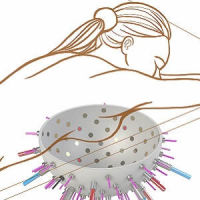Researchers from the Cancer Intervention and Surveillance Modeling Network collaborated with the Breast Cancer Surveillance Consortium (BCSC) to model the benefits and harms of different screening intervals for mammography among subgroups of women on age, breast, cancer risk and breast density. Findings from the collaborative modeling study are published in Annals of Internal Medicine.
Depending on breast density and risk, women between the ages of 50 and 74 may benefit from more or less
frequent mammography screening than is generally recommended. A large majority of women are at average-risk with lower breast density. For these women, triennial screening offers the same level of benefits and harms as compared to biennial screening. It is also more cost-effective. Annual screening is best for women with dense breasts and who are at high-risk.
The generally accepted guidelines recommend biennial mammography
screening for women aged 50 to 74 and advocate the use of shared decision making when determining frequency as well as taking into consideration factors such as an individual woman's preferences, risk level, and breast
density.
Since very limited data is available to guide both women and clinicians regarding this decision, researchers from the Cancer Intervention and Surveillance Modeling
Network, collaborated with the Breast Cancer Surveillance Consortium. They used three well-established models to evaluate outcomes using
various screening intervals for digital mammography among subgroups of
women based on age, risk, and breast density. The outcomes were
projected for women 50 or older who were deciding whether to initiate
(or continue) biennial screening until age 74 or to have annual or
triennial screening.
They found that average-risk women with
lower breast density could safely and effectively extend their screening
interval to once every three years while women at high risk for breast cancer and with dense breasts could go for annual screening. By following these guidelines, the number of false positives, unnecessary biopsies and chances of over-diagnosis could be reduced. In addition, these findings could facilitate shared decision making
and could also help tailor screening intervals.
Source: Annals of Internal Medicine
Image Credit: Wikimedia Commons



























